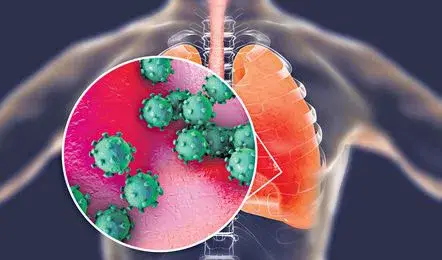
H3N2 Virus: According to reports, the H3N2 virus has been responsible for the deaths of seven individuals. The national capital, Delhi, has also experienced a recent rise in H3N2 cases. Reports suggest that there has been a surge in ICU admissions, particularly among individuals who have pre-existing health conditions and are over the age of 75. “We have observed an increase in the number of patients with severe comorbidities and over the age of 75 who require ICU admission due to H3N2 viral pneumonia,” stated Dr. G C Khilnani, who serves as the chairman of PSRI Institute of Pulmonary, Critical Care, and Sleep Medicine.
★★ Latest Current Affairs ★★
What is H3N2 Virus?
H3N2 Virus is a strain of influenza virus that usually spreads among pigs but has also been known to infect humans. These types of viruses, which normally affect pigs, are called “swine influenza viruses.” However, when they infect humans, they are referred to as “variant” viruses.
In 2011, a specific strain of the H3N2 virus was identified, containing genetic material from avian, swine, and human viruses, as well as the M gene from the 2009 H1N1 pandemic virus. This virus was initially detected in pigs in 2010 and in humans in 2011. The presence of the 2009 M gene may enable this virus to infect humans more easily than other swine influenza viruses. The FluView Interactive Novel Flu A tool provides up-to-date information on reported cases of variant virus infections in the United States since 2010.
H3N2 Virus Symptoms

The symptoms of H3N2v infection are comparable to those of common flu viruses and may involve a fever, along with respiratory symptoms such as cough and runny nose. Additionally, an individual may experience other symptoms like body aches, nausea, vomiting, or diarrhea.
In what ways could an individual catch the flu virus from a pig?
Influenza viruses are capable of being transmitted from pigs to humans and vice versa. The transmission of these viruses from infected pigs to humans is believed to occur in a similar manner to that of seasonal flu viruses spreading between individuals, primarily through droplets expelled when an infected pig coughs or sneezes. In the event that these droplets come into contact with your nose or mouth, or are inhaled by you, you are susceptible to becoming infected. It’s also possible to contract the virus by touching an object contaminated with the virus and subsequently touching your mouth or nose. There is a third possible method of infection, which involves inhaling particles containing the influenza virus. It remains uncertain as to which of these modes of transmission is the most prevalent, according to scientists.
Is H3N2 Virus dangerous?
At present, the level of severity in human illness caused by H3N2v appears to be similar to that of seasonal flu. However, it’s important to note that seasonal influenza can also be a grave illness that may result in complications such as pneumonia, hospitalization, and even death.
H3N2 Virus Treatment
Children and adults with H3N2v can be treated with the same influenza antiviral medications that are used to treat seasonal flu. These drugs, including oseltamivir, zanamivir, peramivir, and baloxavir, are currently recommended and can be obtained with a prescription from your physician. Early treatment is most effective, and it is particularly crucial for individuals with high-risk medical conditions. If your physician prescribes antiviral drugs, it’s critical that you complete the entire course of treatment according to your doctor’s instructions.
Which demographic is more susceptible to severe illness caused by H3N2v?
Individuals at a higher risk of developing complications from seasonal flu include children under five years old, individuals over 65 years old, pregnant individuals, and those with certain long-term health conditions such as asthma, diabetes, heart disease, weakened immune systems, and neurological or neurodevelopmental conditions.
A comprehensive list of individuals at a higher risk of flu-related complications is available at “People at Higher Risk of Developing Flu-Related Complications.” These same groups of people are believed to be at a greater risk of experiencing severe complications from H3N2v infection.
The CDC has released guidelines for individuals attending fairs where pigs may be present during the fair season, including extra precautions for those at a higher risk of serious flu complications.
Please visit freshersnow.com regularly to obtain additional information regarding the H3N2 Virus.



